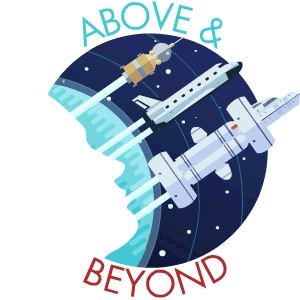

Ever since I was a little girl, I loved to dance, and I loved space. I read Seymour Simon’s books on the Solar System, and I went to ballet class. I read Brian Greene’s The Elegant Universe, and I danced in high school musicals. I majored in dance and almost majored in astrophysics, too, but didn’t have the patience for it. These days I dance, and I read Astronomy magazine.
Some people say it’s a strange combination, but actually art and space are natural bedfellows. Ever since humans became aware of the wider universe, it has inspired our art in a multitude of ways. Jonathan Jones has argued in The Guardian that the pictures of space we have from the Hubble and other telescopes are the most important art being produced today.
It is only recently, however, that we’ve started to explore how art made in space might be different from that made on Earth. Perhaps the very act of being off this world will bring something fundamentally new to the process of creativity, though it could also be argued that art made in space is interesting simply because it’s made in space.

The line between these two ideas gets quite blurry. Canadian astronaut Chris Hadfield took over 40,000 photos during his five months aboard the International Space Station. The 195 photos featured in his book You Are Here: Around the World in 90 Minutes are haunting and beautiful, but they were taken in the same way we take photos on Earth–just from a different perspective.
Likewise, when Hadfield recorded the first original song in space, “Jewel in the Night,” and his more famous cover of David Bowie’s “Space Oddity,” he used the same things we do on Earth: a guitar and his voice.
As an artist, I can’t deny the importance of perspective in the creation process. The only way we can make art is from our own perspectives. Certainly, Hadfield would not have made the art he did if he wasn’t in space. It could easily be argued that just being in space is the “fundamentally new” aspect.
On the other hand, the Spiral Top project, designed and built by Japanese light artist Takuro Osaka and executed by astronaut Koichi Wakata, could only have been conducted in the zero gravity aboard the ISS. The Top looks a bit like an insect with LEDs attached to its legs. The long-exposure photos taken as it spirals and floats down the corridors are stunning. In this case, being in space is necessary for the work to be executed.
Space travel, of course, opens new possibilities for artists, but also new challenges. The Jackson Pollack-style paintings created by video game developer and private astronaut Richard Garriott during a short stint aboard the ISS aren’t necessarily interesting on their own, but they do suggest an intriguing dilemma for future space painters. How do you paint when your medium just floats away?
Visual artist Frank Pietronigro used this property to his advantage when he created the concept of drift painting. The project was to be executed in a reduced-gravity aircraft (sometimes known as a “vomit comet”), where he would enclose himself in a chamber with canvases on all sides and simply release paint into the space around him, letting his body and the paint drift into the canvases. A first attempt was unsuccessful due to extreme motion sickness, and subsequent projects were unfortunately suspended. Still, it offered an interesting idea; in his paper “Drift Painting in Microgravity,” Pietronigro described the act of painting itself as part of the work.
While art made in reduced-gravity aircraft can’t quite be counted as being made “in space” (the aircraft don’t go high enough), the technology has allowed many artists to experiment with what might be possible in zero gravity. One famous example is the out-of-control music video for “Upside Down & Inside Out” by OK Go. A fascinating mess of acrobatics, flying objects, paint, and color, it is a fitting display of human creativity momentarily unbound by the laws of gravity.
The first artists created from the world they witnessed around them, and we do the same today, only today our world is bigger and stranger than ever. Space is a frontier of new environments and playgrounds for our creativity.
While the physics of zero gravity and new environments certainly bring a new aspect to the creative process, so much of our artistic (and otherwise) relationship with space still carries a good deal of mysticism. Indeed, one of the most striking opportunities about being in space is the ability to turn our eyes on our own planet. The awareness of the vastness of space provides the kind of inspiration that artists feed on. It is both a new experience and a new perspective, the moment when science and art come together and let awe and wonder reign.
Perhaps as we spend more and more time in space, our art will focus back on this Pale Blue Dot we currently call home, this marbled ball of life providing the same spark of inspiration that space currently gives us.
At the end of the day, the words of Commander Hadfield may prove to be the most poignant:
“Science is an organization of curiosity and ideas “¦ but art is a fundamental way to express the wonder of being human.”


How We Get To Next was a magazine that explored the future of science, technology, and culture from 2014 to 2019. This article is part of our Above & Beyond section, which looks at our understanding of the universe beyond Earth. Click the logo to read more.
